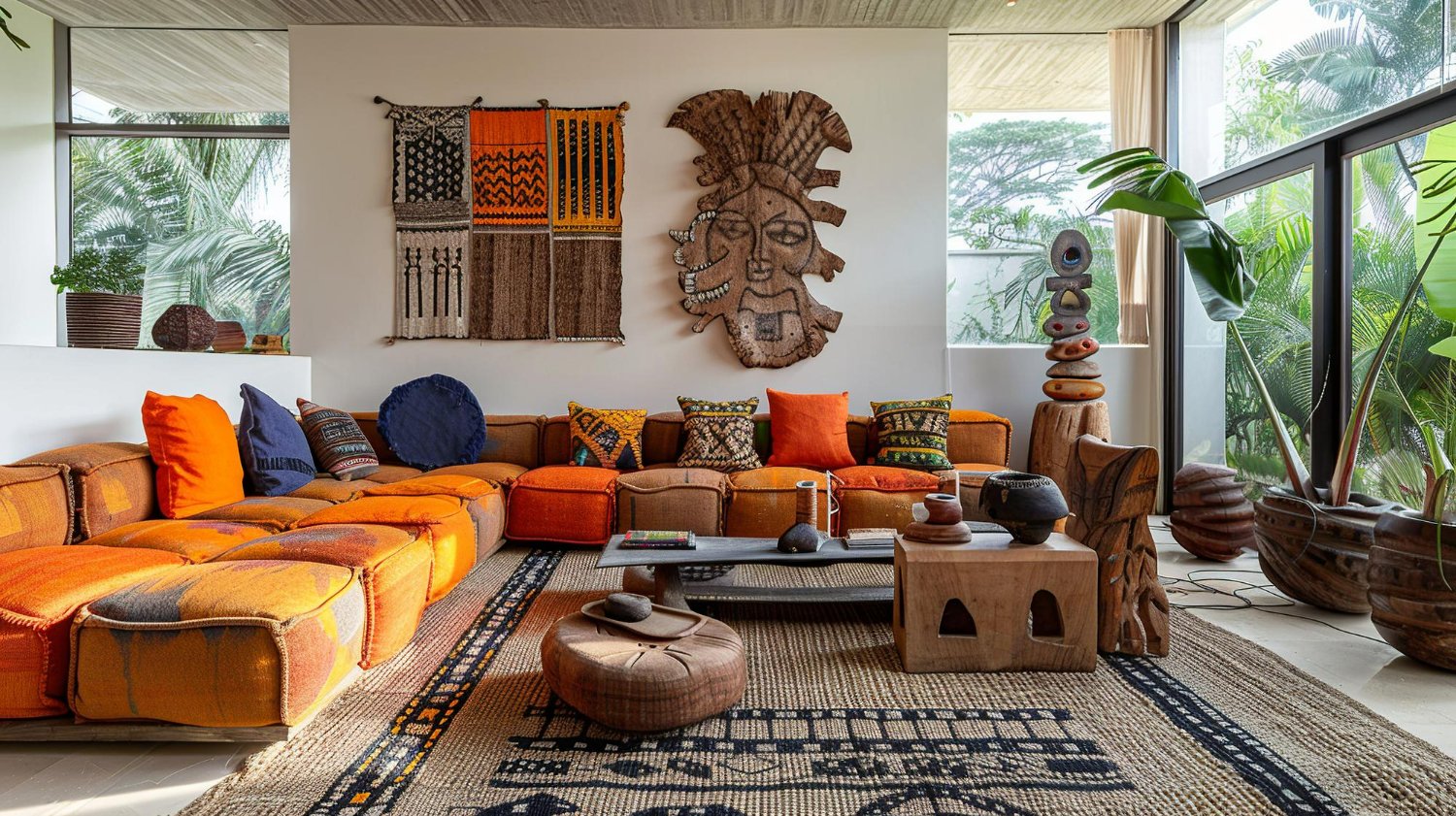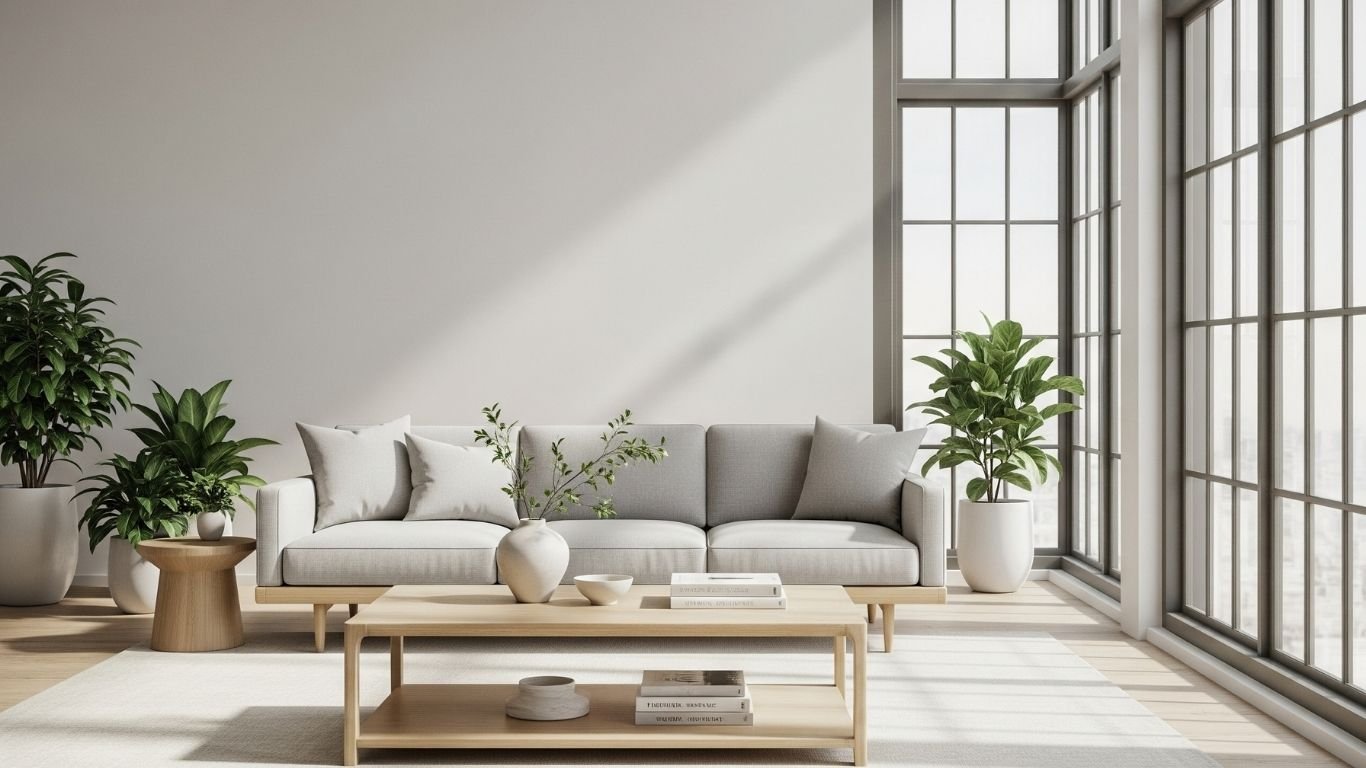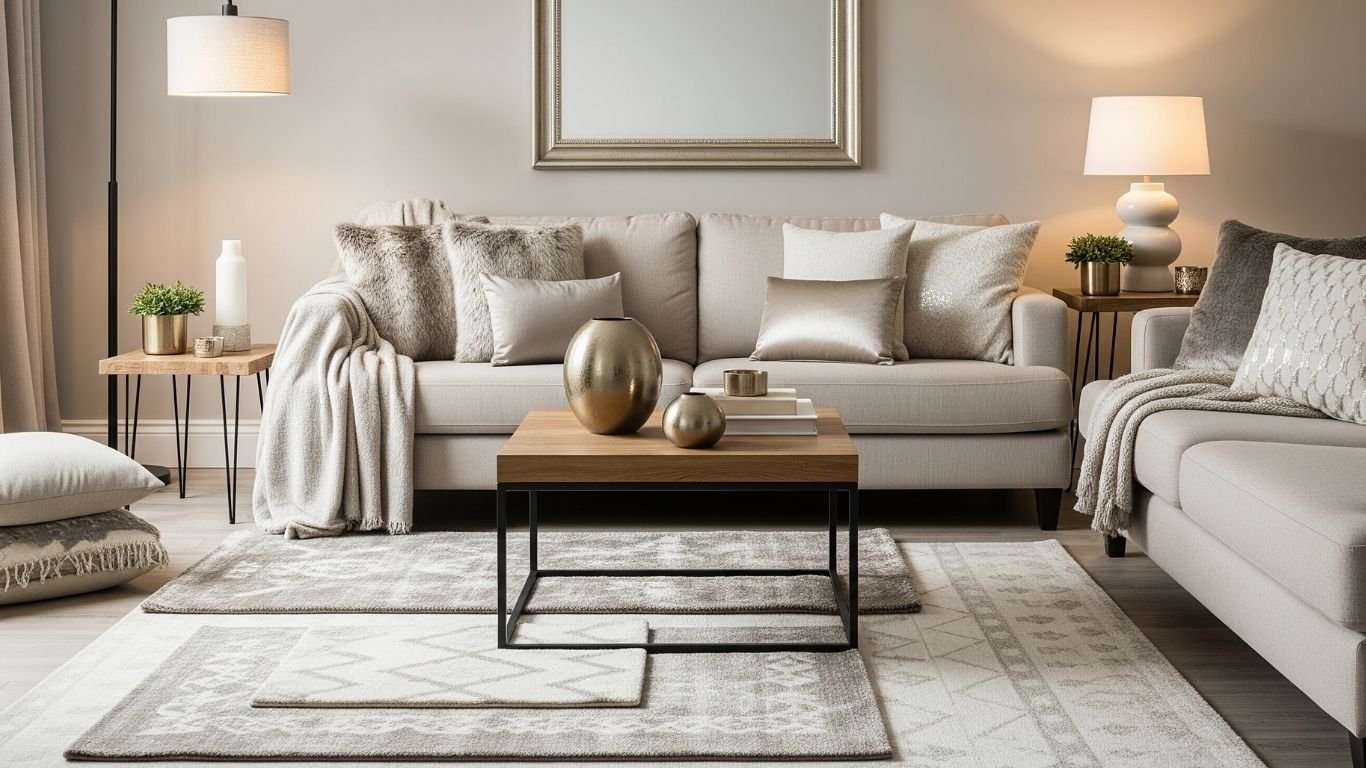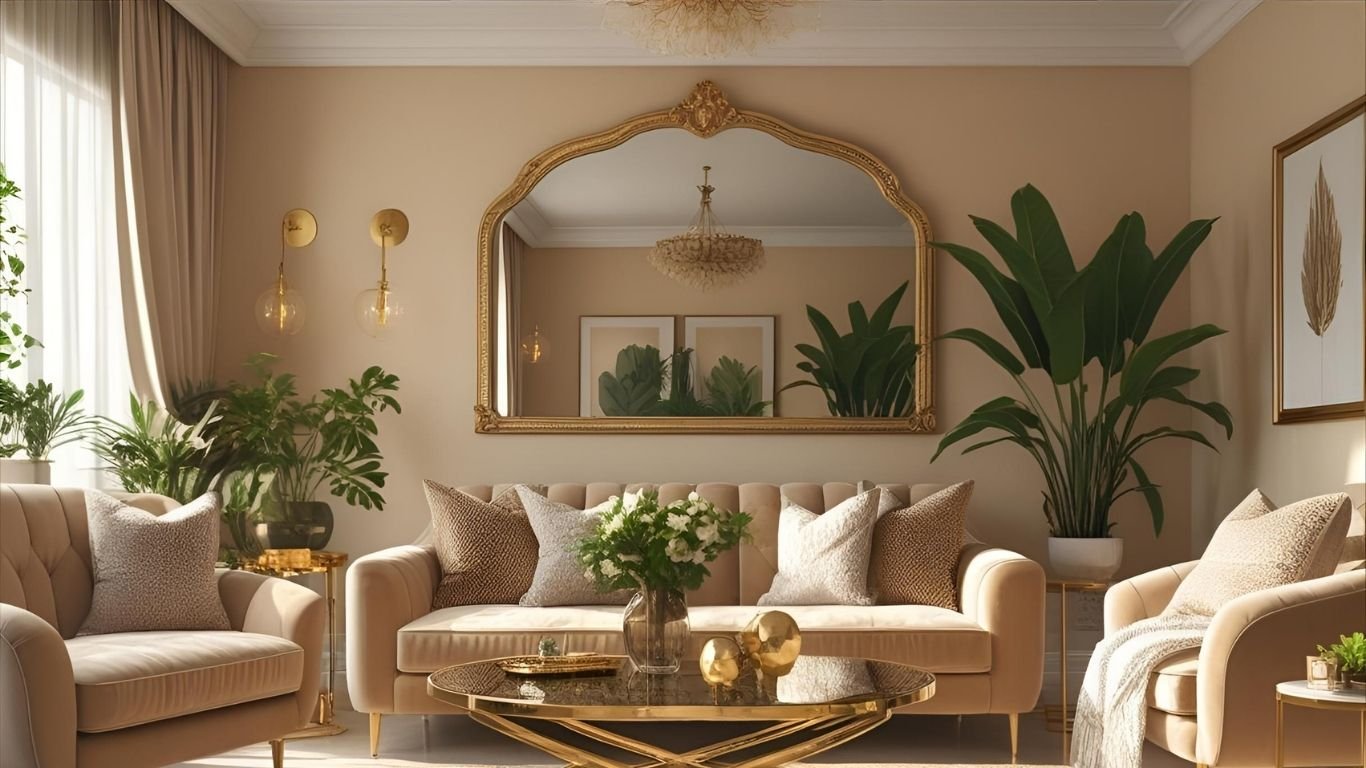Inlite Blog
- Furniture
- Trending

April 10, 2025
by Chinmay2123
Incorporating Traditional Kerala Designs into Modern Home Furnishings
The monsoon was pounding against my grandmother’s tharavad in Kannur when I first truly noticed the intricacy of our traditional wooden ceiling. Rain-soaked and seeking shelter from playing in the courtyard, I lay on the cool red oxide floor, staring up at patterns that had watched over five generations of my family. My grandmother found me there, smiled knowingly, and began telling stories of the craftsmen who had created it – how one carpenter had worked for three months just on the peacock motifs in the corner panels.
That childhood memory flooded back last month as I stood in my bare flat in Bangalore, wondering how to make these sterile white walls feel like home. How could I honor those design traditions while creating a space that worked for my chaotic professional life in 2025?
This tension – between the soul-deep connection to Kerala’s design heritage and the practical demands of contemporary living – isn’t just my personal struggle. Over countless coffees with friends from Thrissur to Trivandrum, I’ve discovered we’re all searching for that elusive balance.
Kerala’s Design Language: A Personal Heritage
My father’s oldest brother, Achachan, still lives in our ancestral home near Thalassery. Walking through those rooms is like moving through living history – each element tells a family story. The worn hollow in the wooden threshold from generations of footsteps. The nilavilakku (brass lamp) that has been lit during evening prayers since before Independence. The intricately carved wooden chairs where uncomfortable family meetings have unfolded for decades.
What makes traditional Kerala decor so distinctive isn’t just its visual elements, but the philosophy behind it. When I interviewed master carpenter Govindan Achari for my college project years ago, he told me something I’ve never forgotten: “We don’t just make furniture; we grow it. The wood remembers the tree it was, and our job is to help it find a new purpose that honors its first life.”
This approach is evident in several characteristic elements:
The Language of Wood: Nothing quite matches the depth and character of traditional Kerala woodwork. My uncle’s 200-year-old charupadi (wooden cot) has darkened to a rich mahogany over decades – its ornate headboard depicting Krishna stories I fell asleep to as a child. Modern pieces rarely have this narrative quality, this sense of being carved from both timber and tales.
Brass and Bronze Heritage: My wedding gift from my grandmother was her mother’s uruli – a wide brass vessel traditionally used for cooking but which she had always used for floating flowers and lamp wicks during festivals. Its patina carries the fingerprints of four generations. When I place it in my living room with fresh lotus blooms, it somehow makes even takeout dinner feel like a celebration.
Handwoven Stories: The simple mundu with kasavu border that my grandfather wore every day until he passed hasn’t lost its smooth texture despite years of washing. Modern fabrics rarely age with such dignity. The weaving cooperative in Balaramapuram where it was made still operates, though now they struggle against machine-made imitations.
Living Color Traditions: Last Onam, I visited my childhood friend Lakshmi who has trained in traditional Kerala mural techniques. Watching her grind natural pigments – vibrant yellows from turmeric, deep reds from cinnabar – was a revelation in our age of digital color palettes. Her contemporary interpretations of classical themes now hang in my bedroom, bridging centuries with each brushstroke.
Finding My Path Between Worlds
After weeks of wandering furniture showrooms filled with indistinguishable globalized designs, I took a weekend trip to Calicut where my cousin had mentioned some workshops blending traditional craftsmanship with contemporary needs. What I found there changed my entire approach.
Honoring Heritage Through Thoughtful Selection
In a small workshop behind Sweetmeat Street, I found Musthafa, a third-generation carpenter working alongside his daughter Fathima, who had recently graduated from design school. Together, they showed me a jaali-inspired room divider that maintained traditional carving patterns but with a simplified, lighter construction perfect for apartment living.
“People come looking for shortcuts,” Fathima told me while showing the hand-cut joinery. “They want the look without the substance. But some things shouldn’t be rushed – good design has patience built into it.”
This insight helped me realize I didn’t need to fill my home with traditional pieces; I needed fewer items with genuine connection. The teakwood writing desk they were creating combined traditional proportions with clever contemporary storage solutions for electronics. It cost three times more than mass-produced options I’d seen, but as Musthafa said while demonstrating its smooth drawer action, “This will still work perfectly when your grandchildren inherit it.”
Personal Touchpoints That Bridge Generations
My mother’s cousin Kunjamma never married, dedicating her life instead to preserving our family’s collection of antique brass lamps. When I visited her before furnishing my new place, she pressed a small 19th-century nilavilakku into my hands.
“Don’t just display this,” she insisted. “Light it sometimes. Things like this need to participate in life, not just observe it.”
Following her advice transformed my relationship with traditional elements. The lamp now sits on my minimalist dining table, lit during meals with friends. Beside it, I’ve placed a contemporary brass bowl designed by a craft collective in Tripunithura. Together, they create a visual conversation between eras that feels organic rather than contrived.
Textile Connections Within Reach
During college vacations, I had worked briefly with a handloom cooperative in Chendamangalam. Reconnecting with them last month, I discovered they now collaborate with young designers creating contemporary home textiles using traditional techniques.
The table runner they created for me uses classic kasavu borders but with a subtly updated pattern and proportions that fit my modern dining table. When a colleague recently complimented it, our conversation shifted to the devastating floods that had affected these weaving communities – creating a moment of cultural connection that no mass-produced textile could have inspired.
The cushion covers I commissioned use traditional madras checks but in muted tones that complement my otherwise minimal living room. Each carries a small handwoven label with the name of the weaver – Radha, who remembered me from my college days and added an extra small detail to the border pattern as a personal touch.
Natural Materials Speaking Contemporary Languages
What strikes anyone entering a traditional Kerala home is the honest relationship with materials – nothing pretends to be something it isn’t. This principle translates beautifully to contemporary spaces.
When my neighbor Sajith returned from working abroad, he partnered with coir craftspeople from his native Alappuzha to create modern lighting designs using traditional weaving techniques. The pendant lamp he created for my dining area casts intricate shadows that transform my plain walls every evening.
For my balcony, I found a contemporary interpretation of the traditional planter’s chair from a workshop in Wayanad, where craftspeople combine rattan weaving techniques with sleeker proportions suitable for smaller modern spaces. Its creator, José, learned weaving from his grandfather but has developed a distinctly contemporary style that respects traditional ergonomics while fitting modern aesthetics.
Creating Your Own Balance
Through furnishing my home and helping friends with theirs, I’ve discovered some principles that might help in your own journey:
Start With Stories, Not Showrooms: Before buying anything, I spent time with older family members, asking about pieces that had meaning in their lives. These conversations revealed what was truly worth preserving and reinterpreting.
Proportion Is Everything: My friend Rahul learned this painful lesson after commissioning a traditional-style wooden almari (wardrobe) that overwhelmed his bedroom. Traditional pieces were designed for homes with 20-foot ceilings and spacious layouts. Be realistic about your space constraints.
Create Breathing Room: Traditional Kerala interiors can feel heavy to contemporary sensibilities. I’ve found that setting traditional pieces against simpler backgrounds – like the carved wooden window frame mounted on my plain white wall – allows them to be appreciated anew.
Function Must Lead: My architect cousin Sarah gave me the best advice: “If it doesn’t work with how you actually live, it won’t last in your home regardless of how beautiful or meaningful it is.” My traditional spice box has been cleverly adapted to store art supplies I use daily – keeping heritage alive through daily relevance.
New Voices Carrying Tradition Forward
What gives me hope for our design heritage is how young craftspeople are reimagining traditions for contemporary life. After searching for months, I recently visited an innovative studio in Kochi where designers in their twenties work alongside traditional craftspeople in their seventies.
Their most compelling pieces emerge from true dialogue between generations – neither blindly traditional nor thoughtlessly modern. I was particularly moved by:
- A young woodworker named Jayan creating modular storage inspired by traditional rice containers, complete with traditional anti-pest neem wood lining
- A lighting designer using traditional bell-metal crafting techniques for minimalist LED fixtures that cast patterns inspired by temple architecture
- A textile collaborative where grandmother-granddaughter teams create home linens combining traditional techniques with contemporary color palettes
Conclusion
My journey taught me that Kerala’s design heritage thrives not through perfect preservation, but through thoughtful dialogue with the present. Watching my niece instinctively curl up in my grandmother’s oonjal while using her tablet—tradition and technology in peaceful coexistence—I see our design legacy continuing naturally across generations. Our cultural aesthetic will endure not as frozen artifacts but as living expressions that evolve, connecting us to our roots while serving contemporary needs through the timeless wisdom of natural materials and skilled craftsmanship.
Visit Inlite Furnishings this weekend. Touch the materials, hear the stories behind each piece, and discover how traditional craftsmanship can speak to your contemporary life. Your home deserves this dialogue between generations.
Share on facebook
Share on pinterest
Share on linkedin
Share on telegram
Related Posts
September 4, 2025
How Can Minimalist Furniture Transform Your Space?
August 21, 2025
Which Mattress Gives You the Best Night’s Sleep?
Categories
- Blog (40)
- curtains (6)
- Decoration (3)
- Fabric (10)
- Furniture (4)
- Interior Design (15)
- Uncategorized (1)
Recent posts
- How Can Minimalist Furniture Transform Your Space? September 4, 2025
- What Are the Best Budget Home Decor Ideas That Look Luxurious? August 28, 2025
- Which Mattress Gives You the Best Night’s Sleep? August 21, 2025
- Luxury Furnishing Tips: How to Make Your Home Look Expensive on a Budget August 14, 2025
- A Complete Guide to Choosing the Right Sofa Fabric for Your Lifestyle August 7, 2025
Archive
Follow us





